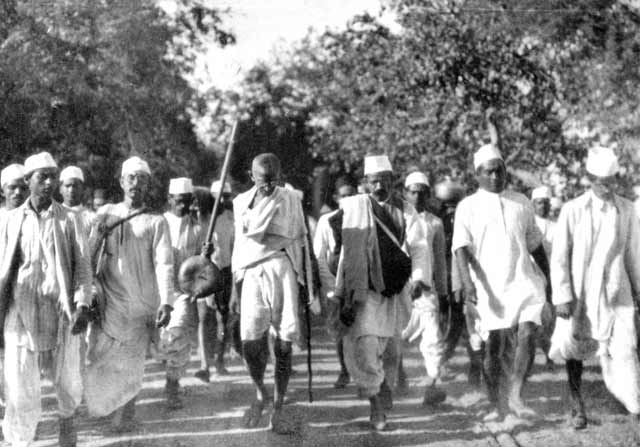CAIRO – 13 March 2022: The Salt March began as a civil disobedience in India under the leadership of Gandhi. The march lasted for 24 days between March 12, 1930 and April 6 of the same year, as a campaign to resist taxes, and a peaceful protest against British measures that led to the absolute monopoly on the production of salt.
Mahatma Gandhi began the Salt March accompanied by 80 volunteers. The participants walked 10 miles a day for 24 days. The total distance covered by the marchers was 384 km, from Sabarmati Ashram to Dandi village, which was then called Navsari.
The number of Indians participating in the march increased along the way, until Gandhi, in breach of the Salt Laws on April 6, 1930, sparked a widespread civil disobedience against the Salt Laws in British India, involving millions of Indians nationwide.

After making salt by fumigation in the town of Nandi, Gandhi continued his march south along the coast, holding meetings on the road. The Indian National Congress also planned to stage a riot at the Dharasana Salt Works, located 25 miles south of Dandi.
Gandhi was arrested at midnight on May 5, 1930. The Dandi march with the Dharasana insurrection drew the world's attention to the Indian independence movement through its extensive press coverage.
The insurrection against the salt tax lasted for about a year and ended with the release of Gandhi from prison, the launch of the negotiations with Lord Irwin at the Second Round Table Conference, and the imprisonment of over 60,000 Indians for participating in the Salt Disobedience.
It is widely believed that the disobedience teachings set by Gandhi, in addition to the march towards Dandi, had a great influence on American activists Martin Luther King Jr., James Bevel and others. It motivated them to launch the civil rights movement to gain legal rights for African Americans and other minorities in the 1960s.
Comments
Leave a Comment